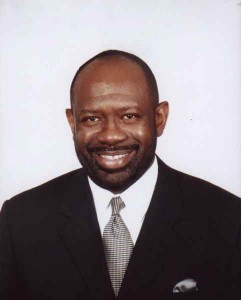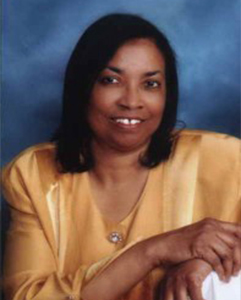Willow Hill Heritage and Renaissance Center Digital Archive Collection
The Willow Hill Digital Archive Project is a collaborative effort between Georgia Southern University and the Willow Hill Heritage and Renaissance Center. This portion of the project is managed by Jaclyn Grizzell, working under the tutelage of Dr. Michael Van Wagenen and Dr. Brent Tharp. The archive consists of a small selection of oral history interviews conducted by Dr. Alvin Jackson, an alumnus of the Willow Hill School. Each interview is accompanied by a transcript and photographs. Several interviews have digital copies of funeral programs, though many also have personal photographs.
The project has been supported in part through a generous grant from the Jack N. and Addie D. Averitt Foundation.
Dr. Alvin Jackson


For the Digital Archive Project, Dr. Alvin Jackson, Chairman of the Board of Trustees for the Willow Hill Heritage and Renaissance Center, loaned a total of twenty-two tapes. Since the mid-1980s, Dr. Jackson has been collecting these interviews in order to document the history of the Willow Hill School and the surrounding community. All subjects interviewed were either educators or students of the school, and in some cases, encompassed both roles. Jackson is a native of the Willow Hill Community, in Bulloch County, Georgia, and attended Willow Hill as a student. Currently, he resides in Fremont, Ohio, where he practices medicine. He has previously served as the Director of the Ohio Department of Health, a member of the Board of Directors of the Association of State and Territorial Health Officials and several medical advisory boards in the state of Ohio. In 2009, Jackson was invited to the White House to meet with President Barack Obama to discuss health care changes. He has received numerous awards for his work in medicine, including the 2005 Peacemaker Award from Tiffin-Fostoria Community Celebration of Martin Luther King Jr. Day.
One of the driving factors for Jackson’s interviews is the need to preserve the history of the area. Along with this, he strives to make this history available through the conversion of the school into a museum. In addition to the numerous hours of interviews, Jackson has also compiled a registry of 7,600 black residents in Bulloch County.[1] This registry is to aid in the genealogical research of those in the area.
When speaking of his work with local elders, Jackson says, “Our goal is, while these seniors are living, to document as much about the history as possible about the school. We have key information but we know there’s other information we don’t have…Sometimes when you’re in the middle of history, you don’t comprehend the impact you have. Those slaves couldn’t read or write, yet gave education to their children. And we are the products of that.”[2]
Notes:
[1] Savannah Morning News. “Whatever It Takes, Get the School.” November 5, 2005, accessed May 1, 2013. http://savannahnow.com/stories/110505/3410639.shtml[2]Mary Landers. “Once a Have for Freed Slave, A School Rejuvenates.” Savannah Morning News. September 1, 2007, accessed May 1, 2013. http://savannahnow.com/coastal-empire/2007-08-31/once-haven-freed-slaves-school-rejuvenates#.U1qHz_ldV8E
Interviews
- A.A. Young (1994)
- Alberta Parrish Hall Ector (unknown)
- Annie Williams (1994)
- Beulah Price (1991)
- Carl Jones (2008)
- Charlie Lane (1993)
- Clara Bell Parker Parrish (1993)
- Dan and Inez Lee (1996)
- Della Hodges Johnson (1993)
- Edna Baldwin (2005)
- Edna Terrell (1993)
- Hettie Lee Wallace (Part One: 1994, Part Two: 2005)
- John Lawton (1994)
- Leticia McCullough (1985)
- Maude Lee Spells (unknown)
- Ozell Lawrence (2013)
- Rosebud McCullough (unknown)
- Willow Hill Teacher’s Appreciation Luncheon (1996)
Willow Hill Heritage and Renaissance Center Digital Archive Collection History
Established in the late nineteenth century, the Willow Hill School was an important step forward for African American residents in the Statesboro and Portal areas of Bulloch County, Georgia. The longest continually open school in the county, Willow Hill closed for good in 1999. After the school integrated in the mid-twentieth century, it became a community center in Portal, Georgia, for several years before sitting empty. Ultimately, the building went up for auction in 2004, and after several struggles, passed into the hands of the descendants of the original families. Headed by Dr. Alvin Jackson, the Willow Hill Heritage and Renaissance Center is currently working in conjunction with Georgia Southern University to bring the story of the school and its role in the community to a larger public audience.
Former slaves who were determined to give their children the opportunity to compete with local whites on an educational level founded the school. The school began in a former turpentine shack in the fall of 1874 by the Parrish, Riggs, and Donaldson families. When speaking of the founders of the Willow Hill School, Nkenge Jackson, the daughter of Dr. Alvin Jackson, as well as a member of the board, told Dr. Erik Brooks, “It was the dreams of these former slaves that were carried through a spirit of yearning for an opportunity to define themselves beyond the barriers of their time. A small one room school house unnoticed, and trampled by adversity, germinated into a legacy of education, perseverance, family, and community and an opportunity to define their destiny.” (54)
It is this perseverance that kept the Willow Hill community and school thriving over the years. A simple one room school, the building which housed it, and the surrounding land was earned through work agreements. The founding families labored for local whites and were given the building and land as payment. This turpentine shack would remain the school building for the next sixteen years. The Donaldson family donated land in 1890 for the building of a second schoolhouse. The school would not remain in this location for long, however. In 1895, they moved to land of better quality and greater acreage. The school’s first official teacher was 15-year-old Georgianna Riggs. Dr. Erik Brooks, the author of Defining Their Destiny: The Story of the Willow Hill School, writes, “Most likely, Georgianna Riggs earned how to read from the slave owner’s children as they ‘played school.’ She was too young to carry out the duties of plantation work as a slave. The other possibility is that she was educated at one of the underground school in the Bulloch County or Savannah area.” (57)
Georgianna Riggs is significant not only because of her age, but also because she found a way to educate herself in a time when the white population was doing everything in their power to hold blacks in lower class positions. These efforts led, in part, to the Supreme Court decision in Plessy v Ferguson (1896). Through this, the United States Supreme Court ruled that the separation of facilities based on race was constitutional as long as these facilities remained equal in accommodations and quality. While this ruling ultimately deprived the school of the promised financial resources, it allowed certain amount of freedom for the African American community in Bulloch County to manage the school according to its own needs.
Although the institution managed to survive through the turn of the century, by 1919 it was clear to Moses Parrish, the chairman of the Board of Trustees of Willow Hill, the school would not survive much longer on its own meager funds and staff. The school had maintained its independence by relying on donations from the Willow Hill community, but these were becoming harder and harder to come by as many black farmers were relegated to subsistence farming and sharecropping. Adding to this was Parrish’s concern that should Willow Hill become a part of the Bulloch County Board of Education, the school would lose the traditions and customs that had been a cornerstone of the Willow Hill School from the beginning. He also feared that should the white board of education be allowed control of the Willow Hill School, a regression of education value would occur, setting back the area’s blacks even further. (59-60)
Parrish tried every possible avenue to keep the Willow Hill School in the hands of his community but new state requirements for the licensing of teachers and accreditation of schools themselves was a final blow to the school as an independent entity. Another significant impact was the loss of funding for African American schools by northern charities. As this money left the South, white school boards absorbed more and more African American schools in order to stay solvent. These schools received few resources and due to this often ended up worse off than if they had continued outside the county school boards. Nonetheless, Parrish sold the school to the Bulloch County Board of Education for $18 in 1920, despite his many misgivings. One provision for the sale did help to ease Parrish’s doubts. In order for the school to be sold, the Bulloch County Board of Education must agree to allow the Willow Hill Board of Trustees to continue in operation and to be allowed input in the running of the school, though in a diminished capacity.
The school continued much as it had been throughout the early twentieth century. It was not until the 1954 Brown v Board of Education ruling that the Bulloch County Board of Education would take a significant interest in the Willow Hill School. The schools in Bulloch County ran under a “Freedom of Choice” plan for many years, which allowed student to select which school they wanted to attend. Most students chose to attend traditionally “white” or “colored” schools as they always had, with only a few black students electing to attend the traditionally white Statesboro High School. This choice was not accepted without resistance. Many families “threatened with eviction from their land, termination from their jobs, and foreclosure on their financial accounts if their children insisted on attending a traditionally white school.” (75) Due to political interference and the Board of Education’s troubles with the Department of Health, Education, and Welfare, the schools within the county were rearranged, and Willow Hill was temporarily closed in 1969.
The school reopened in 1971 as an elementary school, with a white man serving as principal, Jerry Brown. Brown ultimately became an advocate for the black community. He allowed the use of the school grounds and equipment by local churches and did not pretend that the Board of Education was doing its best to help Willow Hill and other black schools. Brooks writes, “Brown saw this [his employment at Willow Hill] as an opportunity to bridge the gap between the white and black communities and as a way of extending a helping hand to those in need.” (80)
The school finally closed for good in 1999, though it would serve as a community center for a few years. In 2004, the Bulloch County Board of Education decided to put the school up for auction. In an effort to retain the heritage of the community and school, the descendants of the Parrish, Donaldson, and Riggs families banded together with other community members to purchase the school.
*All quotations are from F. Erik Brooks. Defining Their Destiny: The Story of the Willow Hill School. (Savannah: The Willow Hill Heritage and Renaissance Center Publishing Group, 2011).
Last updated: 12/14/2023
